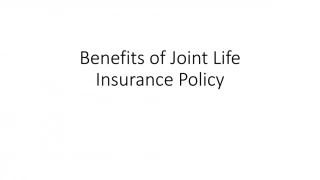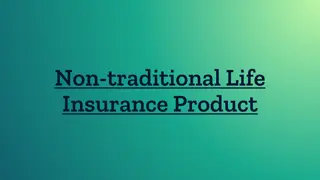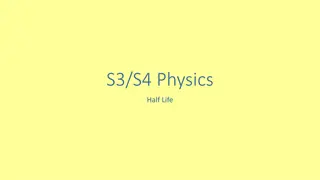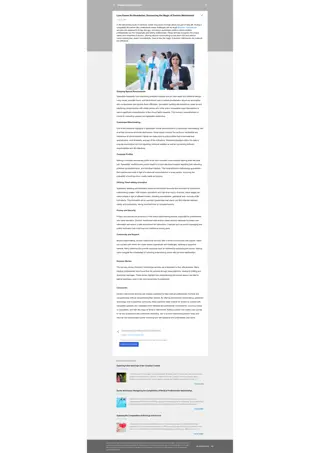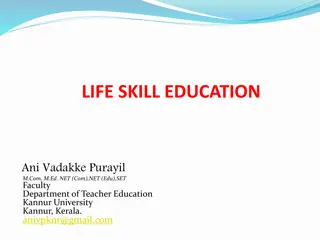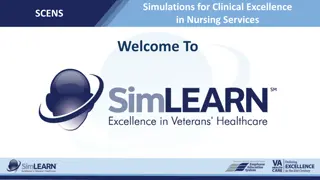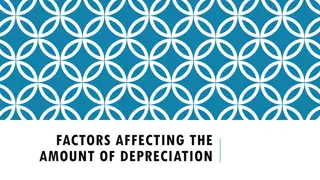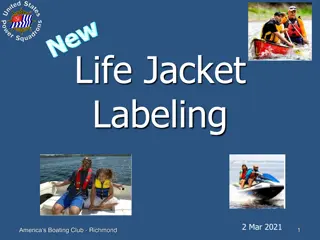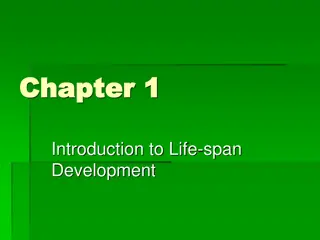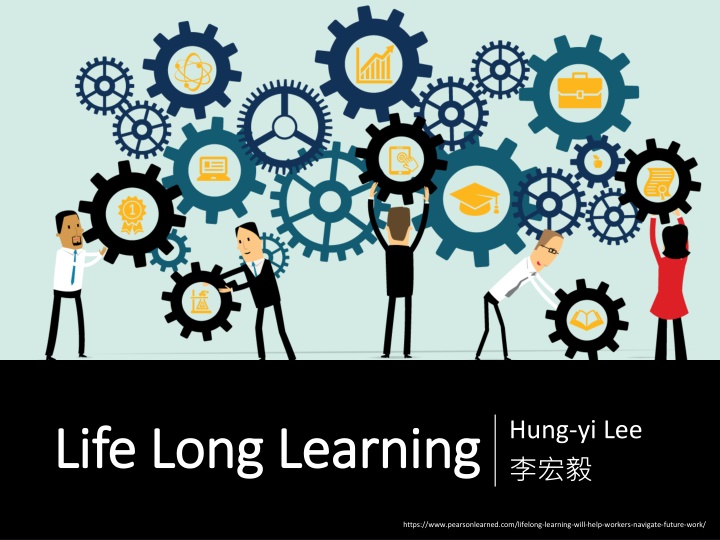
Benefits of Lifelong Learning for Future Work Challenges
Explore the importance of lifelong learning in navigating the future of work, featuring insights from Hung-yi Lee and real-world applications. Discover how continuous learning, multi-task training, and avoiding catastrophic forgetting can enhance worker skills for the evolving job landscape.
Download Presentation

Please find below an Image/Link to download the presentation.
The content on the website is provided AS IS for your information and personal use only. It may not be sold, licensed, or shared on other websites without obtaining consent from the author. If you encounter any issues during the download, it is possible that the publisher has removed the file from their server.
You are allowed to download the files provided on this website for personal or commercial use, subject to the condition that they are used lawfully. All files are the property of their respective owners.
The content on the website is provided AS IS for your information and personal use only. It may not be sold, licensed, or shared on other websites without obtaining consent from the author.
E N D
Presentation Transcript
Hung-yi Lee Life Long Learning Life Long Learning https://www.pearsonlearned.com/lifelong-learning-will-help-workers-navigate-future-work/
Life Long Learning () https://world.edu/lifelong-learning-part-time-undergraduate-provision-crisis/
What people think about AI I can solve task 1. I can solve tasks 1&2. I can solve tasks 1&2&3. Learning Task 2 Learning Task 1 Learning Task 3 Life Long Learning (LLL), Continuous Learning, Never Ending Learning, Incremental Learning
Life Long Learning in real-world applications New task Feedback Old task Labelled Data Model Online
3 layers, 50 neurons each = Example Task 1 Task 2 This is 0 . This is 0 . 97% 96% 90% Forget!!! 80%
Learning Task 2 Learning Task 1 97% 96% 90% Forget!!! 80% 98% Learning Task 1 Learning Task 2 89% The network has enough capacity to learn both tasks.
Example QA: Given a document, answer the question based on the document. There are 20 QA tasks in bAbi corpus. Train a QA model through the 20 tasks
Example Machine forget what it has learned?! Accuracy Task 5 Machine learns 20 tasks sequentially
Example Task 5 Accuracy Accuracy of all 20 tasks Learning 20 tasks sequentially Learning 20 tasks simultaneously Not because machine are not able to do it, but it just didn't do it.
Catastrophic Catastrophic Forgetting Forgetting
Learning Task 1 Learning Task 2 Wait a minute Multi-task training can solve the problem! Using all the data for training Computation issue Training Data for Task 1 Training Data for Task 999 Training Data for Task 1000 Storage issue Always keep the data Multi-task training can be considered as the upper bound of LLL.
Wait a minute Train a model for each task Learning Task 1 Learning Task 2 Learning Task 3 Eventually we cannot store all the models Knowledge cannot transfer across different tasks
Life-Long v.s. Transfer I can do task 2 because I have learned task 1. Transfer Learning: (We don t care whether machine can still do task 1.) fine-tune Learning Task 1 Learning Task 2 Even though I have learned task 2, I do not forget task 1. Life-long Learning:
https://arxiv.org/pdf/1904.07734.pdf Evaluation First of all, we need a sequence of tasks.
Test on Evaluation Task 1 Task 2 ?0,1 ?1,1 ?2,1 Task T ?0,? ?1,? ?2,? ?0,2 ?1,2 ?2,2 Rand Init. ??,?: after training task i, performance on task j Task 1 After Training Task 2 If ? > ?, Task T-1 ?? 1,1?? 1,2 Task T ??,1 ?? 1,? ??,? After training task i, does task j be forgot ??,2 If ? < ?, Accuracy =1 ? ? ?=1 ??,? Can we transfer the skill of task i to task j 1 ? 1??,? ??,? ? 1 ?=1 Backward Transfer = (It is usually negative.)
Test on Evaluation Task 1 Task 2 ?0,1 ?1,1 ?2,1 Task T ?0,? ?1,? ?2,? ?0,2 ?1,2 ?2,2 Rand Init. ??,?: after training task i, performance on task j Task 1 After Training Task 2 If ? > ?, Task T-1 ?? 1,1?? 1,2 Task T ??,1 ?? 1,? ??,? After training task i, does task j be forgot ??,2 If ? < ?, Accuracy =1 ? ? ?=1 ??,? Can we transfer the skill of task i to task j 1 ? 1??,? ??,? ? 1 ?=1 Backward Transfer = 1 ? ? 1 ?=2 Forward Transfer = ?? 1,? ?0,?
Research Directions Regularization- based Approach Selective Synaptic Plasticity Additional Neural Resource Allocation Memory Reply
Why Catastrophic Forgetting? Task 1 Task 2 ?? ? ? ?2 ?2 Forget! ? ?? ?? ?1 ?1 The error surfaces of tasks 1 & 2. (darker = smaller loss)
Selective Synaptic Plasticity Basic Idea: Some parameters in the model are important to the previous tasks. Only change the unimportant parameters. ??is the model learned from the previous tasks. ?has a guard ?? Each parameter ?? How important this parameter is Loss for current task ?2 ? ? = ? ? + ? ???? ?? ? Parameters learned from previous task Loss to be optimized Parameters to be learning
Selective Synaptic Plasticity Basic Idea: Some parameters in the model are important to the previous tasks. Only change the unimportant parameters. ??is the model learned from the previous tasks. ?has a guard ?? Each parameter ?? ? should be close to ??in certain directions. ?2 ? ? = ? ? + ? ???? ?? ? Catastrophic Forgetting If ??= 0, there is no constraint on ?? ? If ??= , ?? would always be equal to ?? Intransigence
Selective Synaptic Plasticity Task 1 ? ?1 ?? ?1 can be changed ?1is small ?2 ? ?2 ?? ?2 ?1 don t touch it! Each parameter has a guard ?? ?2 is large
Selective Synaptic Plasticity Task 1 Task 2 ?? ? Do not forget! ?2 ?2 ? ? ?? ?? ?1 ?1 ?1is small, while ?2 is large. (We can modify ?1, but do not change ?2.)
Selective Synaptic Plasticity ??represents importance ??= 1 ??= 0 Intransigence MNIST permutation, from the original EWC paper
Selective Synaptic Plasticity Elastic Weight Consolidation (EWC) https://arxiv.org/abs/1612.00796 Synaptic Intelligence (SI) https://arxiv.org/abs/1703.04200 Memory Aware Synapses (MAS) https://arxiv.org/abs/1711.09601 RWalk https://arxiv.org/abs/1801.10112 Sliced Cramer Preservation (SCP) https://openreview.net/forum?id=BJge3TNKwH
https://arxiv.org/abs/ 1706.08840 Gradient Episodic Memory (GEM) Task 1 Task 2 ?? ? as close as possible ?? ? ?? ?? ?? ? ?? 0 : negative gradient of current task : negative gradient of previous task Need the data from the previous tasks : update direction
Research Directions Selective Synaptic Plasticity Additional Neural Resource Allocation Memory Reply
Progressive Neural Networks Task 1 Task 2 Task 3 input input input https://arxiv.org/abs/1606.04671
PackNet https://arxiv.org/abs/1711.05769 Compacting, Picking, and Growing (CPG) https://arxiv.org/ abs/1910.06562
Research Directions Selective Synaptic Plasticity Additional Neural Resource Allocation Memory Reply
https://arxiv.org/abs/1705.08690 https://arxiv.org/abs/1711.10563 https://arxiv.org/abs/1909.03329 Generating Data Generating pseudo-data using generative model for previous tasks Generate task 1 data Generate task 1&2 data Training Data for Task 1 Training Data for Task 2 Multi-task Learning Solve task 1 Solve task 2
Adding new classes Learning without forgetting (LwF) https://arxiv.org/abs/1606.09282 iCaRL: Incremental Classifier and Representation Learning https://arxiv.org/abs/1611.07725 Three scenarios for continual learning https://arxiv.org/abs/1904.07734
Concluding Remarks Memory Reply Additional Neural Resource Allocation Selective Synaptic Plasticity
Curriculum Learning : what is the proper learning order? Task 2 Task 1 96% 97% 90% Forget!!! 80% Task 2 Task 1 97% 97% 90% 62%
taskonomy = task + taxonomy ( ) http://taskonomy.stanford.edu/#abstract

